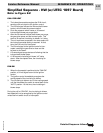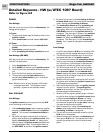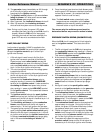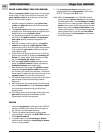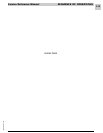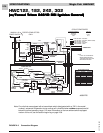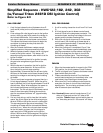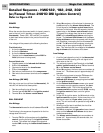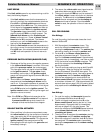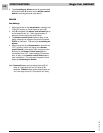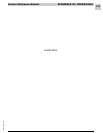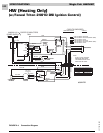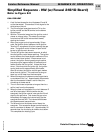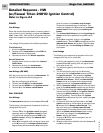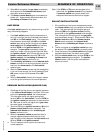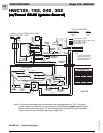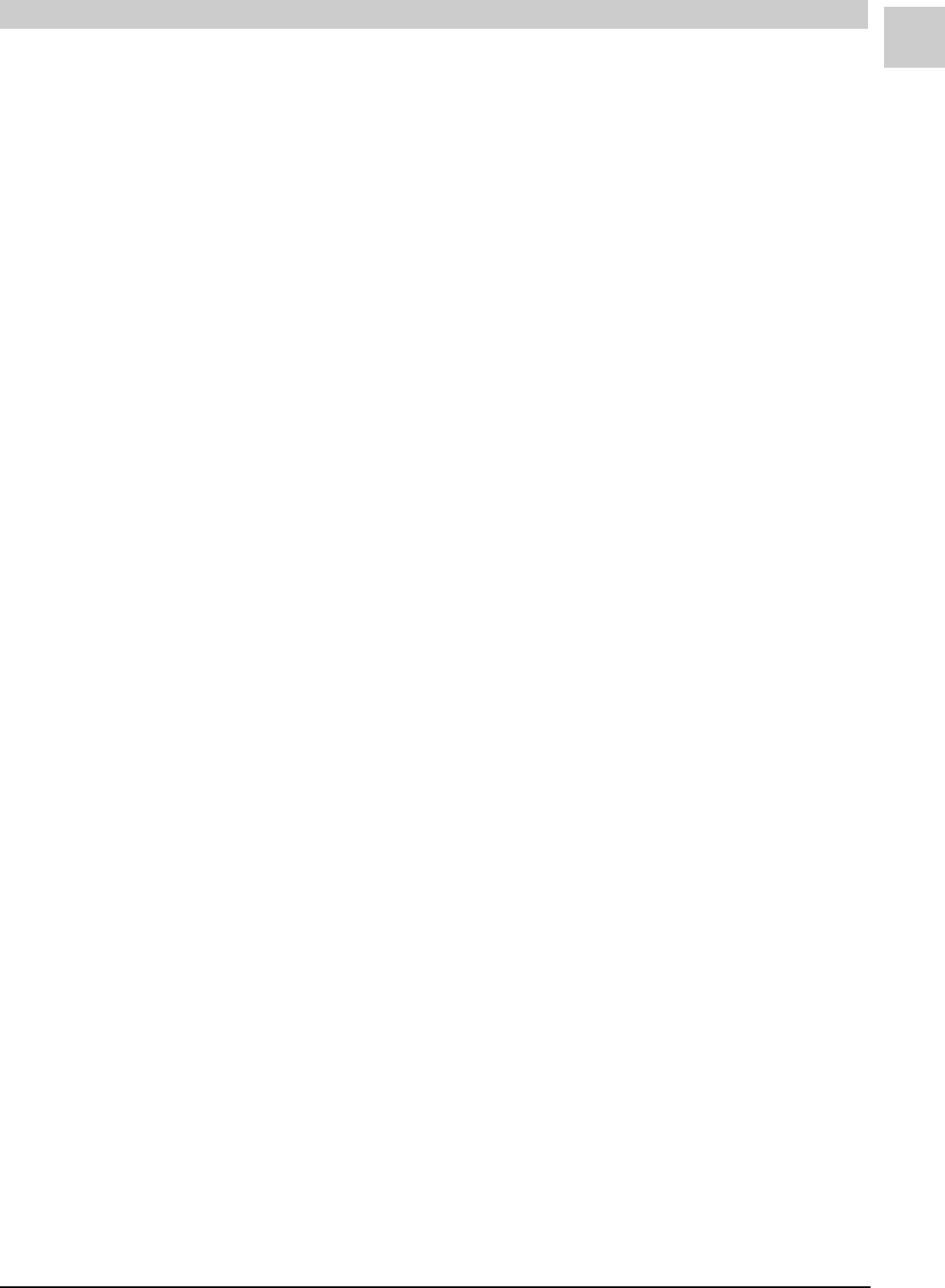
Service Reference Manual SEQUENCE OF OPERATIONS
2-19
SRM-HW/HWC 2/99
LIMIT OPENS
If the limit switch opens for any reason during a call for
heat, the following happens:
1. If the limit switch senses that the temperature in
the unit is too high, the contacts between terminals
C and NC on the limit switch open and the con-
tacts between C and NO close. This interrupts the
24-volt signal to the pressure switch and also de-
energizes terminal P.SW on the ignition control.
The gas valve closes immediately, as the 24-volt
signal to terminal P.SW is no longer present. The
induced draft blower and the circulating air
blower continue to run. Power to blower control
board terminal W is maintained. The blowers
continue to run until the limit switch closes or the
heat call at the thermostat is satisfied.
2. When the limit switch senses that temperatures in
the unit are normal, the contacts between terminals
C and NO open, the contacts between terminals C
and NC close and operation of the unit returns to
normal.
PRESSURE SWITCH OPENS (BLOCKED FLUE)
1. If blockage of the flue occurs, the negative pressure
in the induced draft blower is reduced. At the set
point of the pressure switch, the contacts open.
This interrupts the 24-volt signal to terminal P.SW
on the ignition control. The gas valve closes
immediately, as the relay in the ignition control
opens and interrupts the signal to terminal V2 of the
ignition control.
2. Terminal W on the blower control board stays
energized and the circulating air blower contin-
ues to run. If the negative pressure is restored, the
pressure switch closes and sends a 24-volt signal
to the P.SW terminal on the ignition control. The
ignition control makes a trial for ignition again and
operation returns to normal.
Note: If the P.SW and TH terminals energize at the
same time, the ignition control will not respond.
A pressure switch being stuck closed is an
example of what would cause this to happen.
ROLLOUT SWITCH ACTIVATED
1. If the conditions in the burner compartment cause
the rollout switch to trip, the contacts on the switch
open, interrupting the 24-volt signal going to termi-
nal P.SW on the ignition control. This causes the
ignition control to de-energize terminal V1,
interrupting the 24-volt signal to the gas valve and
immediately closing it.
2. The reason the rollout switch was tripped must be
determined before corrective action is taken.
3. The signal to terminal P.SW can only be restored if
the rollout switch is reset, which can only be done
manually. The W terminal on the blower control
board remains energized and the circulating air
blower continues to operate. Once the rollout
switch is reset, the operation of the unit returns to
normal.
CALL FOR COOLING
Line Voltage
On a call for cooling, the thermostat closes the circuit
between Y, G and R.
1. With Y energized, the contactor closes. This
sends line voltage to compressor terminal C,
causing the compressor to start. The outdoor fan
also starts, drawing air through the outdoor coil.
2. Terminal G on the blower control board also
energizes at the same time as Y. This starts the
timer on the blower control board. Approximately
15 seconds later (or immediately - see note on page
2-20), the terminal marked COOL energizes. This
sends line voltage to the circulating air blower,
starting the blower.
3. The unit continues cooling as long as both Y and G
are energized. When the cooling call is satisfied,
the circuit between Y, G and R is interrupted. The
contactor immediately opens, interrupting power to
the compressor and the outdoor cooling fan.
4. With the low voltage signal to terminal G on the
blower control board interrupted, the board starts
a countdown to blower “off”. After approximately 90
seconds (see note on page 2-20), the cooling speed
relay opens and the circulating air blower shuts
down.
Low Voltage
1. On a call for cooling, the thermostat closes the
circuit between R and terminals G and Y.
2. The 24-volt signal energizes terminal G on the
blower control board, starting the fan “on” timer.
Approximately 15 seconds later (or immediately -
see note on page 2-20), the relay closes. This
sends line voltage to the COOLING speed terminal
on the blower control board, which starts the
circulating air blower.
3. The signal from Y energizes the contactor, starting
the compressor and the outdoor cooling fan.
4. When the cooling call is satisfied, both G and Y are
de-energized. The contactor opens immediately,
causing the compressor and the outdoor cooling
fan to stop.



